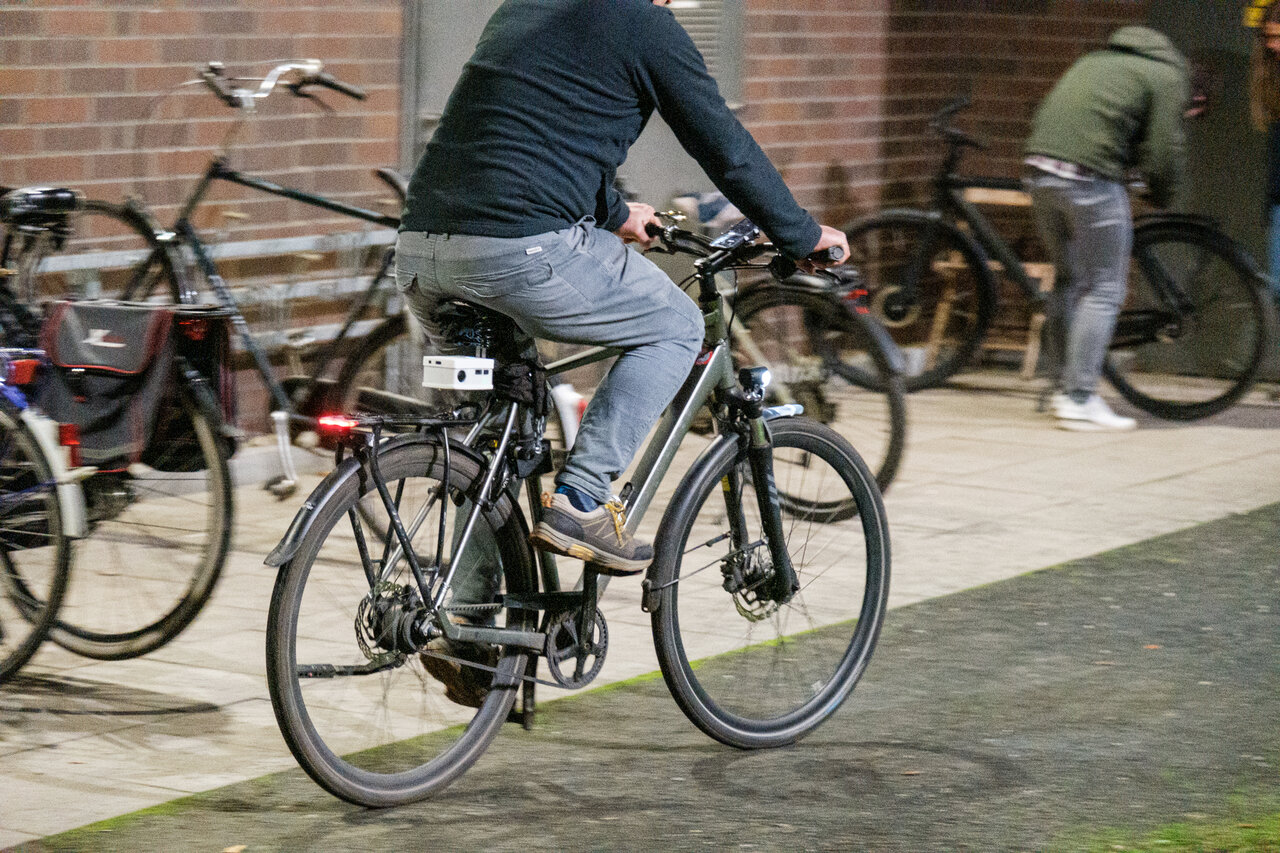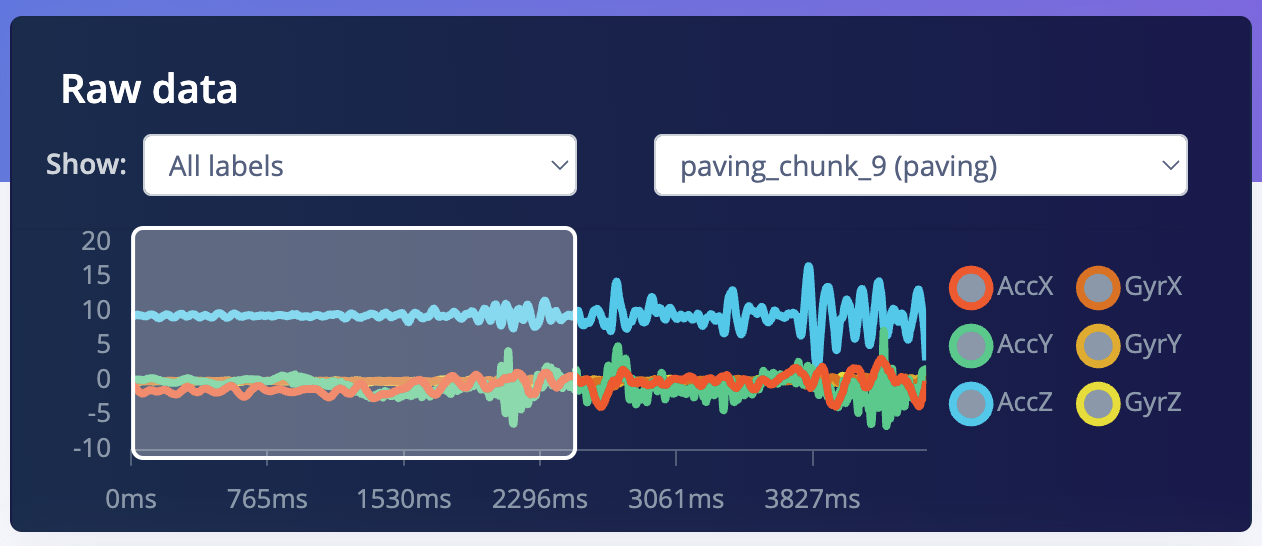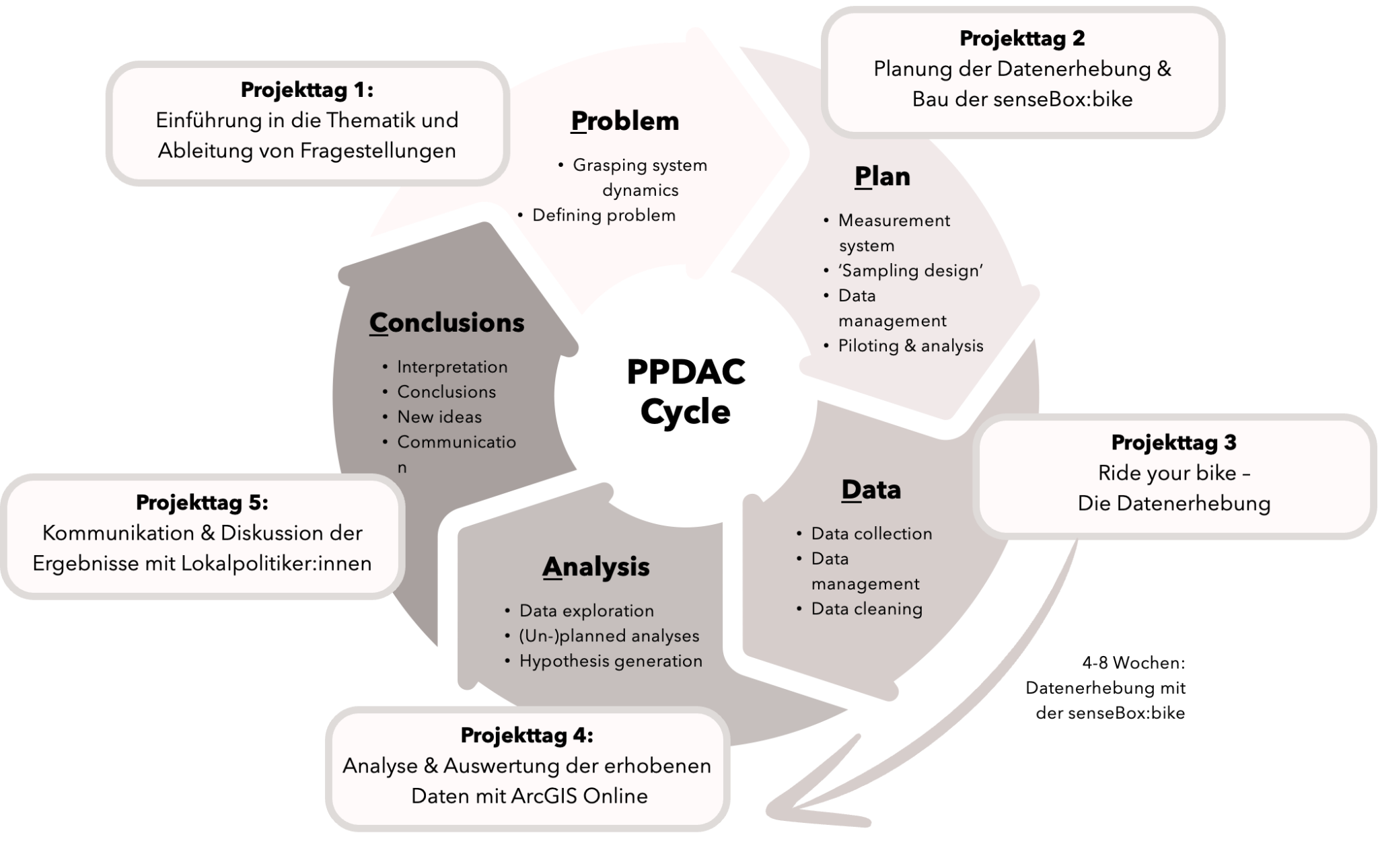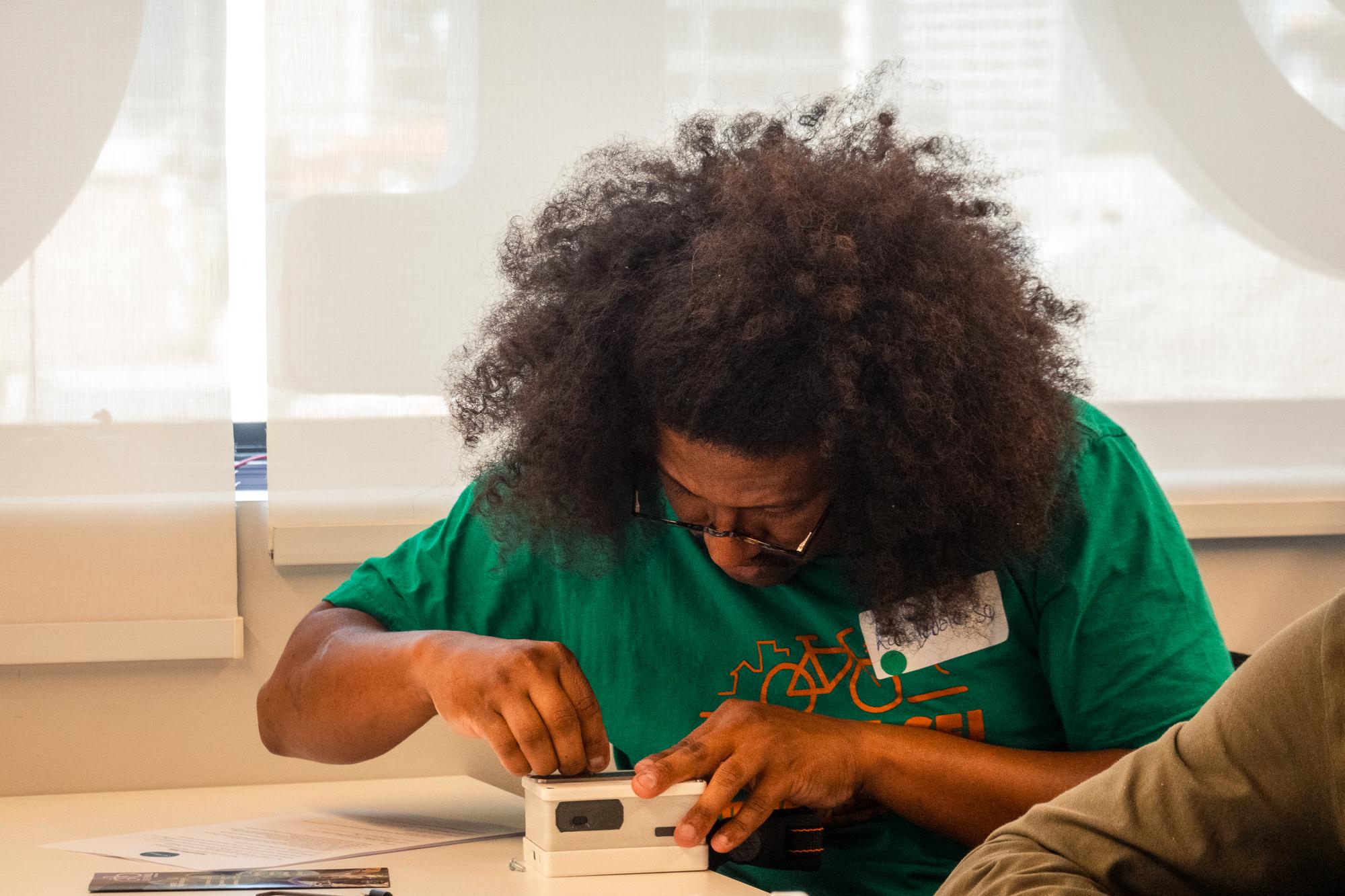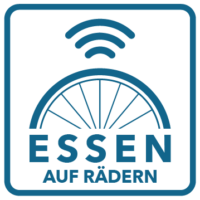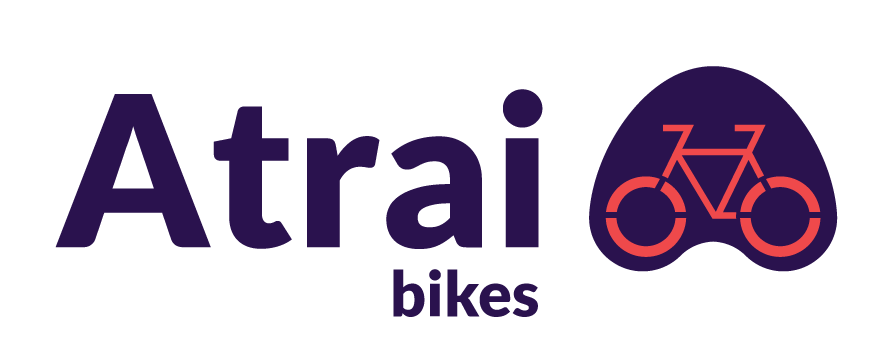🛠️ No soldering required
The senseBox:bike offers an easy assembly process, making it accessible for users of all skill levels.
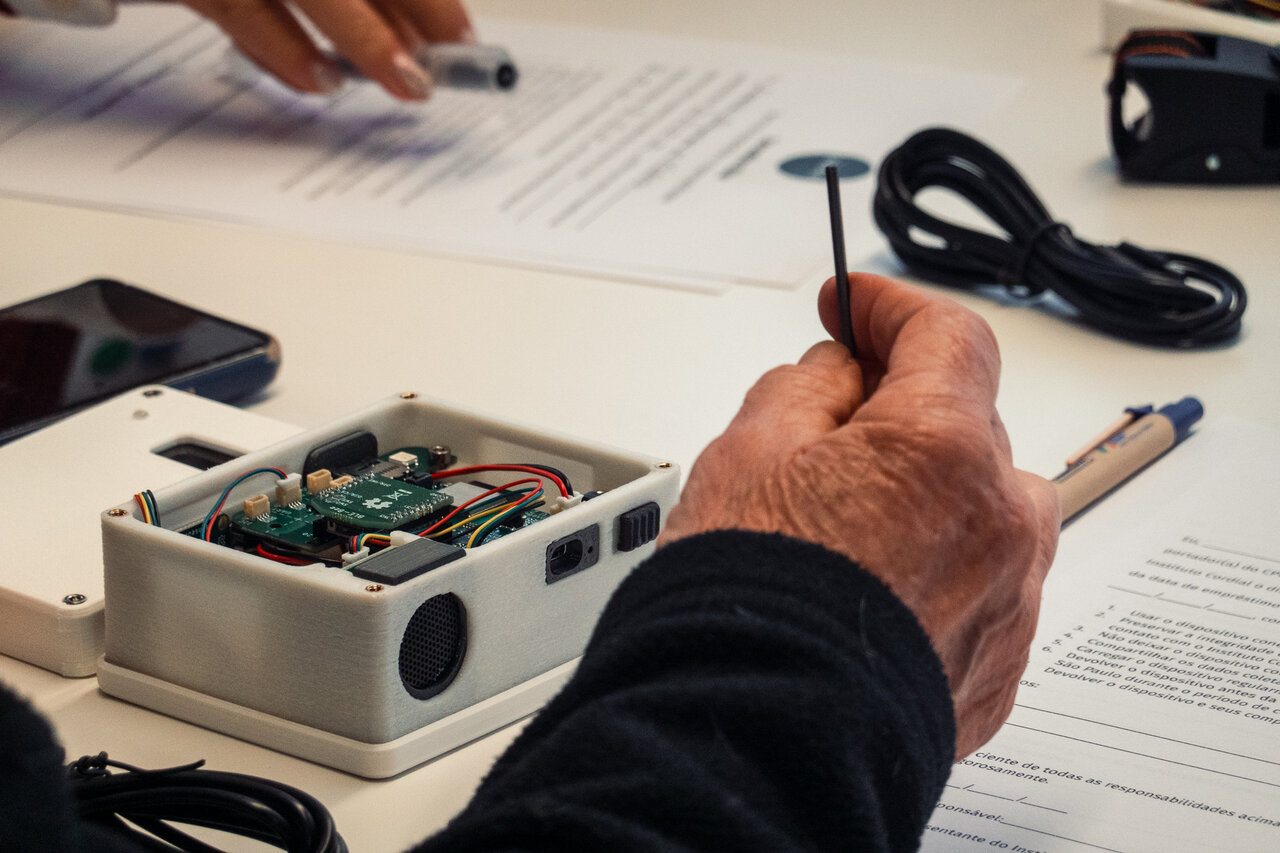
🔋 Battery Life
With 4-8 hours of battery life, the senseBox:bike ensures you can collect data throughout your ride without worrying about running out of power.
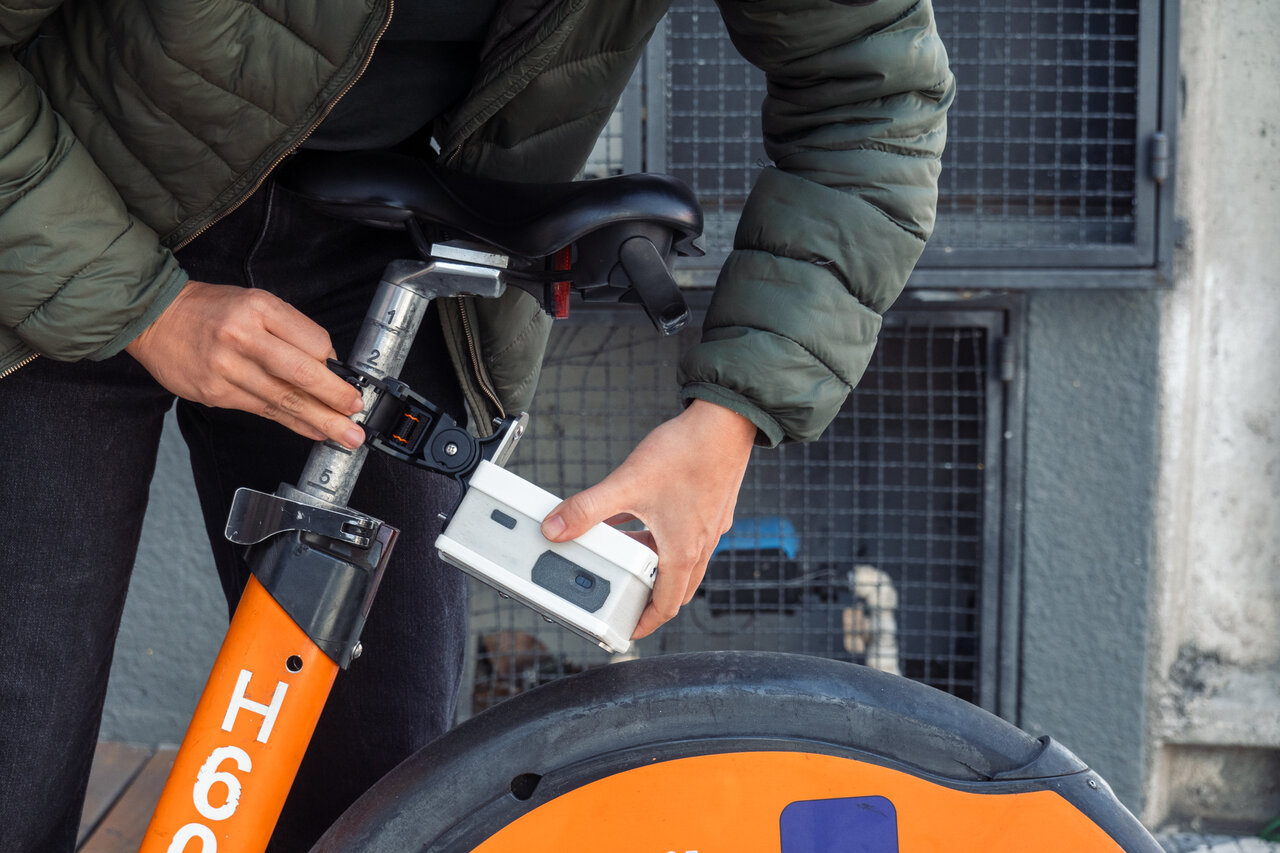
🌡️ Environmental Sensors
Equipped with temperature, humidity, and fine dust sensors, the senseBox:bike provides comprehensive environmental data.
🛜 Connectivity
The senseBox:bike offers seamless connectivity through Bluetooth Low Energy, allowing you to easily sync your data with the companion app.
✨ AI Capabilities
On-device machine learning detects overtaking maneuvers and surface quality.
🌎 Proven
Proven in various workshops and projects worldwide, including schools and citizen science initiatives.
